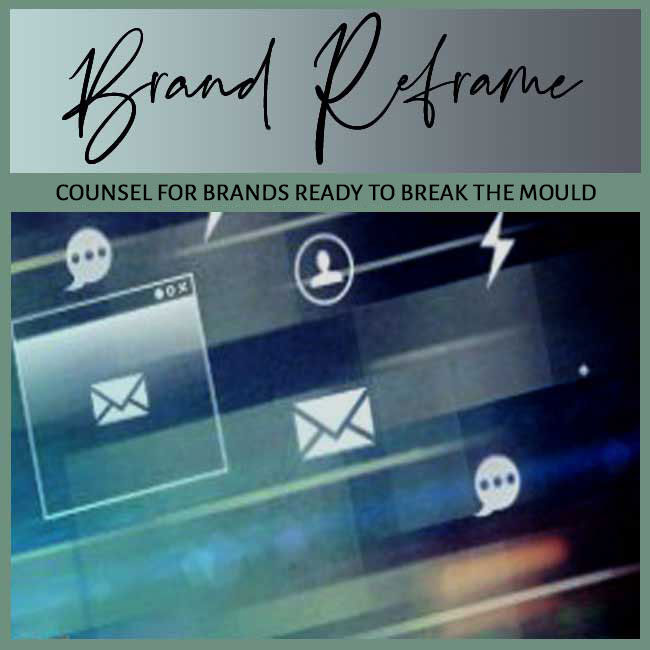
BY: SHOBHA PONNAPPA | BRAND BREAKTHROUGH STRATEGIST | 45 YEARS | 125+ CLIENTS
Brand relevance is the degree to which a brand fits naturally and meaningfully into the lives, priorities, and values of its audience in the present moment. It is not simply a matter of being recognised; it is about being indispensable. A relevant brand earns its place in the consumer’s mind and heart by delivering not just a product or service, but a sense of belonging, identity, and timely value. When a brand achieves relevance, it becomes part of the customer’s personal narrative.
I’ve found in my work as a Brand Breakthrough Strategist that brand relevance has a living quality. It is not a fixed trait you acquire once and keep forever; it’s a dynamic alignment between what your brand offers and what your audience needs and cares about right now. This means relevance can strengthen or fade depending on how closely you track cultural shifts, how deeply you listen to your customers, and how willing you are to evolve without losing your essence.
We live in an attention-scarce marketplace where being noticed is not the same as being chosen. The sheer volume of brands vying for a moment in the spotlight has made attention fleeting. Audiences are bombarded with marketing messages, yet only those brands that feel personally significant break through and inspire action. Relevance is what makes the difference between a passing glance and a meaningful connection.
In the past, a legacy reputation or dominant market share could sustain a brand’s position for years. That is no longer true. Today, customers are quick to shift allegiance if they sense a brand no longer reflects their values or fits their life. Relevance provides resilience … it enables brands to weather market fluctuations, outlast trends, and recover from setbacks faster. Without it, even the most famous names can find themselves overlooked.
Cultural alignment means understanding and engaging with the cultural context in which your audience lives. This isn’t about adopting every passing fad; it’s about tuning in to the deeper shifts in language, values, and behaviours that matter to them. It’s about knowing what symbols resonate, which narratives feel authentic, and which messages will miss the mark.
The brands that excel here are those that can read cultural currents and respond in ways that feel natural. They integrate relevant cues into their storytelling, product design, and customer interactions while staying true to their identity. Cultural alignment is about relevance with integrity … staying connected to the audience’s world without faking membership in it.
Customer fit is the ongoing match between your offer and the evolving lives of your customers. What worked perfectly for your audience five years ago may no longer match their habits, needs, or aspirations today. Brands that fail to track these changes risk becoming irrelevant without realising it.
Maintaining customer fit requires a discipline of continuous listening. Surveys help, but they are not enough … you need immersion. That could mean spending time in the environments your customers inhabit, observing how they interact with your category, and understanding the trade-offs they make. The closer you are to their lived experience, the better you can shape your brand to remain essential.
While functional benefits can open the door, emotional resonance is what keeps customers loyal. People want to feel understood, valued, and inspired by the brands they choose. This emotional connection often outweighs rational considerations when it comes to repeat purchase or advocacy.
A brand with emotional resonance tells stories that mirror the customer’s identity and aspirations. It creates experiences that feel personal and affirming. It communicates in a tone and style that feels familiar but never stale. Emotional resonance makes a brand not just relevant, but irreplaceable in the eyes of its audience.
Relevance cannot be preserved by standing still. Adaptive innovation is the practice of evolving with purpose … introducing new ideas, formats, or delivery methods that keep the brand fresh without alienating its loyal base. This is not reinvention for reinvention’s sake; it is thoughtful adaptation.
Brands that master adaptive innovation monitor shifts in their category and audience behaviour, then make calculated updates that reinforce their role in the customer’s life. They manage to stay recognisable while continually offering new reasons to engage. Adaptive innovation ensures that relevance is renewed, not eroded, over time.
For a new or relaunching brand, relevance begins with clarity of purpose. You need to define the exact role you aim to play in your audience’s life right now, not in some imagined future. This involves identifying the problem you solve, the identity you serve, and the cultural conversations you are part of.
Once you have that clarity, embed it in every aspect of your brand … from the core offer to the way you present and promote it. Early relevance comes from consistency and coherence. If every touchpoint reinforces your fit with your audience, you will establish a foundation that can be strengthened and adapted as markets change.
Relevance is a living relationship. Sustaining it means maintaining an active, two-way dialogue with your audience. You must keep listening, learning, and adjusting in ways that preserve your essence while reflecting their present reality.
Regularly review your brand expressions … visuals, voice, channels … to ensure they still resonate. Refresh them in small, meaningful ways rather than making jarring overhauls. Above all, keep checking that your promise matches your delivery. The moment customers sense a gap, your relevance begins to slip.
One common mistake is to confuse brand recognition with brand relevance. A household name can still be irrelevant if it no longer plays a meaningful role in people’s lives. Relying on past glory without adapting to present needs is a recipe for decline.
Another pitfall is chasing trends that don’t align with your brand’s values or audience. This can create short-term buzz but long-term disconnect. Finally, ignoring early signals of drift … like declining engagement or lukewarm customer sentiment … allows irrelevance to take root quietly, making it harder to reverse.
A tea company with over a hundred years of history was beloved by older consumers but ignored by younger ones. Sales were steady but stagnant, and the brand risked fading from cultural conversation. I introduced modern health-focused blends while retaining its iconic packaging and storytelling. This balanced tradition with wellness-driven relevance. Within a year, younger buyers accounted for 25% of sales growth without alienating the loyal base.
A performance-focused sportswear brand was losing appeal to lifestyle-driven labels. It needed to bridge the gap between athletic credibility and cultural cool. By partnering with streetwear designers and sponsoring grassroots urban sports events, I made the brand enter new cultural spaces authentically. This dual positioning revived its relevance in both performance and style markets.
A fast-growing software platform for creative agencies risked losing its close-knit feel as it expanded globally. I introduced “micro-community” features that allowed users to connect by niche, preserving intimacy while scaling. This maintained emotional relevance for its original audience and attracted new users who valued belonging as much as functionality.
Facing declining foot traffic, a small bookstore could have relied on discounting, but instead I made it double down on cultural role. It hosted author readings, children’s story hours, and local art showcases. The store became a social anchor, drawing customers for experiences as well as purchases, and reinforcing its place in the community’s cultural life.
An established beauty brand known for polished, airbrushed campaigns felt increasingly out of step with changing attitudes towards authenticity. I shifted its creative to showcase unretouched, diverse models and emphasised individuality. This tapped into cultural alignment and emotional resonance, rebuilding relevance across global markets.
Rather than competing on technical features alone, I made a B2B software firm begin telling stories of how clients achieved transformation using its product. These narrative-driven campaigns positioned the brand as a problem-solving partner, not just a tool provider. This humanised approach deepened trust and improved conversion quality.
The most reliable method is to engage directly with your customers in conversation. Ask them how they see your brand today, what role it plays in their lives, and whether it still meets their needs in the current context. Avoid relying solely on metrics like awareness or traffic … these can mask a lack of resonance. In my experience, the language customers use will reveal whether your brand still feels vital to them.
The key is to distinguish between what is essential to your brand’s identity and what is open to change. Preserve the symbols, values, and promises that form the core of your brand, while updating expressions like packaging, channels, and messaging to feel current. Think of it as renovating a beloved home … you can modernise the interiors without changing the foundations.
Absolutely. Smaller brands often have the advantage of agility and closeness to their customers. They can adapt quickly to shifts, offer more personalised experiences, and occupy niche spaces that big brands overlook. Relevance is not a function of size; it is a function of fit and connection.
There is no fixed schedule, but annual relevance reviews are wise. The refresh itself should only happen when you detect a drift in cultural alignment, customer fit, or emotional resonance. Over-refreshing can confuse your audience; under-refreshing can make you invisible.
Social media is a powerful tool for sustaining relevance because it allows for real-time cultural engagement and ongoing presence in your audience’s daily life. But its impact depends on clarity of voice and consistency of purpose. Social posting without strategic alignment can dilute rather than enhance relevance.
Lasting relevance comes from a mindset of continuous, purposeful adaptation. You don’t need to be the fastest to react, but you must be consistent in tracking your audience, understanding their evolving context, and making adjustments that feel meaningful rather than cosmetic.
Explore Brand Relevance Loss … Real Cases & Fixes
Case Studies
FAQ Insights

"One BIG IDEA can turn brand stagnation into unstoppable movement. Spots are limited each week ... book your breakthrough session now."
Shobha Ponnappa
My Definitive Guides to Other Critical Branding Concepts
Smart insights, real-world frameworks, and idea-driven clarity – designed to help brands move.
Get my fortnightly Brand Reframe newsletter. Smart insights, distilled thinking, and focused momentum to help your brand lead.

Get my free AI strategy guide. Smart prompts, sharper briefs, and practical ways to make AI support your brand momentum.

Just fill in the form to join. Get my newsletter and the guide shown alongside, all with several game-changing tips.